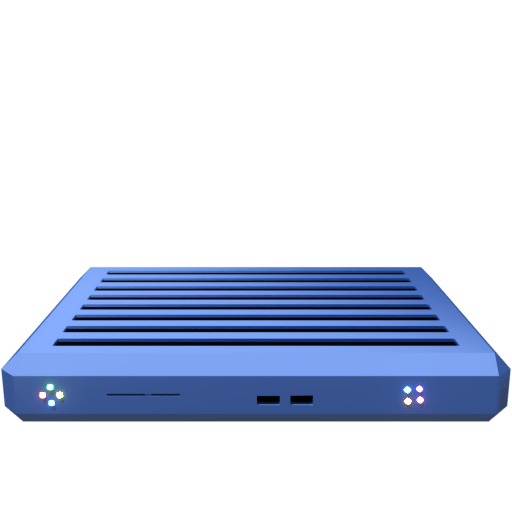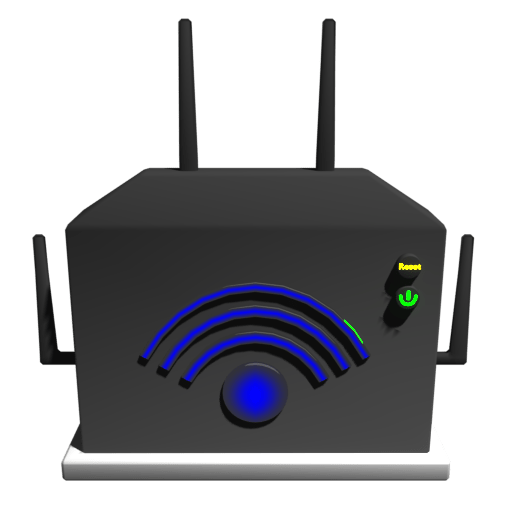Introduction
What role did the internet play in my life, and how has it helped me succeed in life? How did this blog come about?
Read on in this exciting blog post to find out about how grateful I am for this wonderful tool! 😊
A brief history of the internet
The internet was not always a place where you could immediately load a page or blog post, nor connect wirelessly (except on cellular networks). This section will briefly explain the history of the internet as well as the invention of wireless communications, also known as Wi-Fi.
The ARPANET
The first version of the internet was made with funding from the U.S government and the Advanced Research Projects Agency Networks to create what is known as the ARPANET back in the late 1960s and early 1970s. This was the groundwork for what later became the internet in 1995. ARPANET used packet-switching to connect computers across large-scale geographic areas and was created with the goal of creating a resilient and decentralised communication system for universities and the military. (Kanade, V., 2023)
Wi-Fi
The inventor of Wi-Fi was Vic Hayes because he presided over the Institute of Electrical and Electronics Engineers (IEEE) panel that created the 802.11 standards in 1997. Before the general population knew about Wi-Fi, Hayes established the quality level that would make Wi-Fi workable. (Mary., B, 2024)
IEEE 802.11 belongs to a set of local area network (LAN) standards which are known as IEEE 802, and allows for the setting of medium access control (MAC) addresses, and physical layer (PHY) network protocols for the purpose of wireless local area networks (WLAN) that are used under the brand name known as Wi-Fi. Wi-Fi is used for communicating with other devices and the internet without the requirement of wires. (Wikipedia contributors, 2024)
How the internet has transformed my life
The internet (also known as the World Wide Web, or simply as the Web), has transformed my life in many positive ways. It has enabled me to create this blog, create the very post that you are now reading, and has enabled me to enjoy a more independent life. Without the internet, not only could this blog never have come to light, but I would not have been able to employ myself as a blogger. ⌨️
Fun fact: Before the internet and before computers, the closest you could ever get to blogging were typewriters. Typewriters were notorious for their keys getting stuck, and to correct these mistakes, white-out fluid was used and needed to dry before you could retype again. Typewriters have since been made obsolete by computer keyboards.
Benefits and drawbacks of internet in Australia
Being online has it’s benefits for me such as:
- Career: I find blogging to be a fun career for me due to creativity and freedom of expression.
- Messaging: I can keep in touch with friends and family through social media messaging services. I also used MSN Messenger in 2003 up until Skype replaced it.
- AI Chatbots: I have found that AI chatbots are useful for me to converse with and help me solve problems like with UPBGE python code. I also find them helpful in some research and learning. 📚🤖
- Email: Before free text messaging services like Facebook Messenger, I primarily used email to message my friends and family.
- Self-Teaching: Using Google and YouTube to search for tutorials on Blender (A 3D modelling software) and UPBGE (a fork of the Blender Game Engine).
- Sleep: YouTube has been helpful for me to sleep through the use of calming music videos and relaxing acoustic guitar music.
- Video Games: I can play games online, and Flash (browser) games used to be a large part of my childhood. Although I very rarely play Flash games today, I am more likely to play traditional console video games. 🧑🏻💻
- Movie Watching: I can binge-watch Netflix at respite care.
- Video Game Updates: Video games can now have continuous updates thanks to the internet, adding newer content and fixing game-breaking bugs. Example: Terraria.
- Accessibility To Research: Research is now very easily done online as opposed to buying or borrowing encyclopedias and books from the library.
However, being online also has it’s weaknesses for me such as:
- Satellite-based Internet: In rural parts of Australia, the only way to get internet is by satellite, not cable or fixed-line. This means that the signal strength can be highly volatile during our winter when it is raining, or when thunderstorms are occurring causing the signal to weaken and drop. This phenomenon as I found out is known as “rain fade”. Speeds can vary lots depending on the weather. 🛰
- Identity Verification: Online identity verification systems are designed for individuals with sufficient access to documentation to prove that they exist. This flaw raises serious concerns about accessibility for individuals with disabilities and the elderly, who usually have limited access to identity documentation which puts them at risk of exclusion.
- Privacy: Any personal data that exists online is at risk of being hacked and stolen.
- Limited Data Caps: Data caps in Australia can be very limited in rural regions. Prior to the National Broadband Network (NBN), a data cap of just 15GB (gigabytes) was the largest amount I had to cope with for many years. This amount is hardly enough for a heavy user to function online, and can be used up in a matter of weeks or even days. With the arrival of the NBN, our monthly cap was increased to 130GB, eliminating most of our worries with the data cap.
- Bandwidth Throttling: If the data cap has been exceeded, the ISP (internet service provider) will slow down the connection speed. Because I use the internet so heavily, our internet speed would drop to 64kbps, which made many online activities difficult. This was an extremely common occurrence back in the early 2010s because of our extremely limited data cap.
- Obsession With Internet: Without a consistent connection to the internet, I get frustrated, usually either because of slow speeds or a disconnected router. This is largely due to my obsessive compulsive disorder (OCD).
How the internet can raise awareness about autism
There are many ways we can raise awareness about autism online. Here are some of them:
Blogs
Blogs are a great source for allowing individuals with autism spectrum disorder (ASD) to inform others about the condition, and raise autism awareness. We write posts about autism, our experiences, and provide information regarding comorbidities.
I made this online blog with the goal of increasing awareness about autism through education. With my personal experience of living with autism in a society that isn’t set up for individuals with autism, this blog’s goal is to decrease stigma, and thereby promoting a greater quality of life and well-being for those who have autism.
A blog post needs to be indexed (made visible in the search results) first by search engines in order for the public to see it. Posting consistently is the key to building a successful blog over time.
Videos
Videos are another way of raising awareness about autism online. Video-sharing platforms like YouTube, Vimeo, Dailymotion, etc can be used to share videos about autism and drive understanding about this neurodiverse condition.
Images
Images depicting symbols used in autism (like the ribbon puzzle piece) can also be used to raise awareness about autism, as the internet enables us to share them across a wide range of platforms like Facebook, Instagram, X (formerly Twitter), Pinterest and LinkedIn.
The internet back in the 2000’s
The internet was very different back in the early 2000’s compared to the present day. It was much slower in Australia, and often averaged around 48kbps to 64kbps due to the limitations of dial-up access.
Landline phones
Before high-speed internet, dial-up modems (which were attached to landline phones) were originally used for accessing the internet in the early 90s. As modems needed to run through the phone line, it was impossible to use the phone and have an open internet connection simultaneously. If you had an active connection established and then someone tried to dial a number out or receive an incoming phone call, the modem would immediately disconnect you from the internet. 📞

In 2003, there was much competition in my household for the single landline with my older brother & sister. I wanted to connect to the internet to play online games while my brother and sister wanted to chat to their friends all at the same time on the single phone line. While this was going on, we would also have incoming phone calls on the landline. This would result in a lot of yelling out of “Don’t answer it!”. To annoy each other, we would answer the phone! 🤣
Eventually, my parents installed a second landline phone. 🎉
To stop the fighting between myself and my siblings over internet access, my parents used a timer to manage internet usage which allowed us to take turns when using the internet.
Once my brother and sister were able to get their own mobile phones (which we now refer to as dumbphones), this did help to ease the time management somewhat by allowing them both to go online on their 2G and 3G enabled mobile networks which did not use dial-up.
The timing of internet access on landline phone usage and the on the computer persisted until we eventually moved to broadband internet sometime later.
Modems and the telephone network
Dial-up internet access used a device known as a modem to connect to the public switchboard telephone network (PSTN), by dialing a number on a traditional phone line. The modem then attempts to connect to the Internet Service Provider (ISP)’s server. (Wikipedia contributors, 2024).
Because of how modems work by converting audio signals from the traditional phone line into digital signals, I became very used to the noise of our modem dialing up back in the early to mid 2000’s. This sound has now become very nostalgic with me.

Weaknesses of dial-up internet
Dial up was not without it’s issues. Sometimes, the phone line would be mis-communicate, by giving a “busy” signal when it actually wasn’t. If the phone line was engaged or in use, an error code by the modem would be an audible “Boop.. Boop.. Boop.. Boop..”. This frustrated me so much, that I cheered the modem on to connect by yelling “Connect! Connect! Connect!” over and over again, but it kept timing out! The struggle was real!! 🤪
Dialing up was not free either. Everything costs money, and dial-up internet access wasn’t an exception. Every time a dial up connection was established, you got a bill from your ISP, and it was not uncommon in Australia for these bills to be high in price so that the ISP could keep the servers running and maintained.
If you failed to pay your bill on time, you would still have access, but you would be redirected to a specific page where you could pay your bill online. 🦤 Until you paid your bill, attempting to go anywhere else would return a “403 Forbidden” error message which was meant to force you into paying your bill.
Due to the early technology at the time, the payment either occasionally wouldn’t go through or it usually would take a few days to process. Because of this, most people usually paid their internet bills manually, at various community buildings like post offices for instance.
Internet speeds
Internet speed (also known as bandwidth) is measured in bits per second, which is the amount of data being transferred. For example, a speed of 48kbps to 64kbps is a speed that is considered not only slow, but very impractical for 2024 standards.
The blog that you’re reading will be very slow to load on 64kbps. Because most sites now require significantly more data to load than this, online accessibility and browsing becomes a nightmare from my experience.
Here is a brief list of what internet speeds are in data transfer and how they can affect usage:
- Kilobits per second (kbps): This is the slowest speed. At this speed, it will take an average webpage with multimedia elements a long time to load. This slow speed makes video playback a hassle and streaming impossible. Blogging can be difficult on these speeds.
- Megabits per second (mbps): This is a significantly faster speed than kilobits. This speed enables good surfing of the Web, webpages will load at a decent speed, and video playback can be done relatively easily. Blogging can be done easily on this speed.
- Gigabits per second (gbps): Now the standard currently as of 2024 in Australia and around the world, this speed enables you to download lots of things in just a few seconds to hours depending on file size. It also allows for extremely fast video playback and makes streaming and browsing very easy. This speed also makes blogging extremely easy.
Note: These speeds are an estimate, and may not reflect real speeds. The performance on every device will be different compared to actual internet speed.
Methods of transmission
There are various ways an internet signal can be transmitted. One way is through a plastic cable known as an Ethernet cable. This delivers extremely fast speeds and is more secure than Wi-Fi because the signals that travel through the cables cannot be intercepted as easily. Cable-based internet also does not get affected from rain fade (where the signal weakens from heavy rainfall), which is a phenomenon that usually affects satellite-based internet.

An example of a fiber-optic Ethernet cable used for high-speed internet access. Ethernet cables like these can allow for speeds of up to 1 gigabits per second! Created with the 3D modelling software Blender (version 4.0.2). Copyright © Zachary Wright.
The only drawbacks of Ethernet cables are that they can split or fray, and the plastic connector can come off. At this point, the cable must be replaced. They can also take up room, and make routers less portable.
Wi-Fi routers
Another common way of transmitting an internet signal is through a Wi-Fi router. These devices sometimes have antennas to help catch signals although not every router has them. Routers are used to pass signals on to devices like game consoles, mobile phones and tablets, and even computers. Without these routers, your mobile devices would have a very hard time trying to connect to the internet except through cellular towers.

Weaknesses of Wi-Fi routers
Wi-Fi routers do have some disadvantages. They can lose signal very suddenly for no apparent reason, then regain it again sporadically. They can also die very unexpectedly without any warning. Although rare, a faulty router may short-circuit and overheat, becoming a potential fire hazard.
Another weakness with Wi-Fi routers are their short range. Multiple extenders are often needed to boost the signal to another area, which can be a very expensive option for larger homes. This is worse with buildings that are made from metal or concrete because the higher densities of these materials make the signals harder to pass through (Race Communications, n.d).
Princess Lilli Lilac

Although Lilli does not have anything much to do with the internet, she is displayed on this blog at the bottom of every page and post and on this blog’s Instagram. We have been inseparable since the day we first got her as an 8 week old kitten in 2011, and we have loved each other ever since. You could say she is the star of the entire blog! 🌟
Conclusion
I hope you have learned a lot about how the internet has had a positive influence in my life, a small amount of it’s history, how it has evolved and how it has given me a career as a blogger. See you on the next blog post! Please make sure to leave a thoughtful reply! 🗞
References
Wikipedia contributors. (2024, September 3). Dial-up Internet access. In Wikipedia, The Free Encyclopedia. Retrieved 07:42, September 24, 2024, from https://en.wikipedia.org/w/index.php?title=Dial-up_Internet_access&oldid=1243742190
Bellis, M. (2024, July 28). Who Created Wi-Fi, the Wireless Internet Connection? https://www.thoughtco.com/who-invented-wifi-1992663
Wikipedia contributors. (2024, September 26). IEEE 802.11. In Wikipedia, The Free Encyclopedia. Retrieved 00:17, September 27, 2024, from https://en.wikipedia.org/w/index.php?title=IEEE_802.11&oldid=1247835755
Kanade, V. (2023, July 5). What is ARPANET? Definition, features and importance. https://www.spiceworks.com/tech/networking/articles/what-is-arpanet/
Race Communications. (n.d). These 7 materials can block Wi-Fi signal (& what you can do about it). Race Communications. https://race.com/blog/materials-block-wifi-signal/
